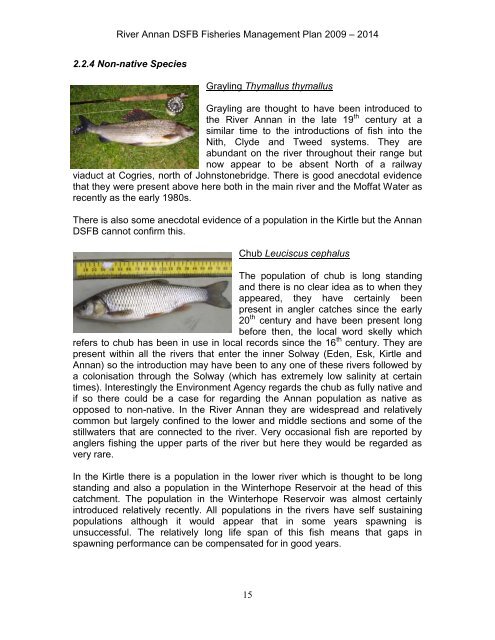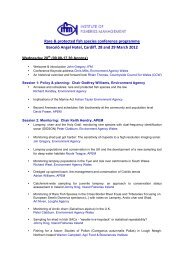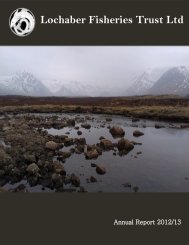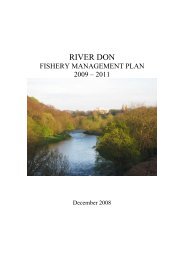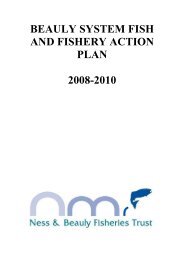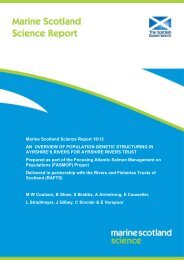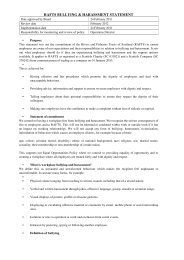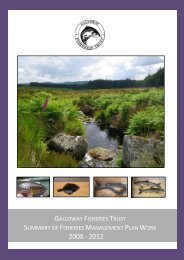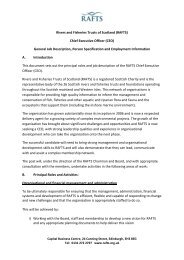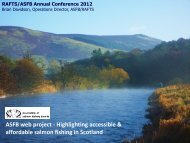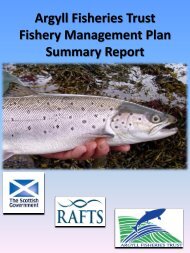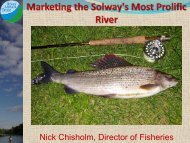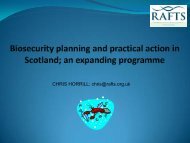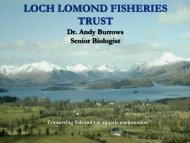You also want an ePaper? Increase the reach of your titles
YUMPU automatically turns print PDFs into web optimized ePapers that Google loves.
River <strong>Annan</strong> DSFB Fisheries <strong>Management</strong> <strong>Plan</strong> 2009 – 20142.2.4 Non-native SpeciesGrayling Thymallus thymallusGrayling are thought to have been introduced tothe River <strong>Annan</strong> in the late 19 th century at asimilar time to the introductions of fish into theNith, Clyde and Tweed systems. They areabundant on the river throughout their range butnow appear to be absent North of a railwayviaduct at Cogries, north of Johnstonebridge. There is good anecdotal evidencethat they were present above here both in the main river and the Moffat Water asrecently as the early 1980s.There is also some anecdotal evidence of a population in the Kirtle but the <strong>Annan</strong>DSFB cannot confirm this.Chub Leuciscus cephalusThe population of chub is long standingand there is no clear idea as to when theyappeared, they have certainly beenpresent in angler catches since the early20 th century and have been present longbefore then, the local word skelly whichrefers to chub has been in use in local records since the 16 th century. They arepresent within all the rivers that enter the inner Solway (Eden, Esk, Kirtle and<strong>Annan</strong>) so the introduction may have been to any one of these rivers followed bya colonisation through the Solway (which has extremely low salinity at certaintimes). Interestingly the Environment Agency regards the chub as fully native andif so there could be a case for regarding the <strong>Annan</strong> population as native asopposed to non-native. In the River <strong>Annan</strong> they are widespread and relativelycommon but largely confined to the lower and middle sections and some of thestillwaters that are connected to the river. Very occasional fish are reported byanglers fishing the upper parts of the river but here they would be regarded asvery rare.In the Kirtle there is a population in the lower river which is thought to be longstanding and also a population in the Winterhope Reservoir at the head of thiscatchment. The population in the Winterhope Reservoir was almost certainlyintroduced relatively recently. All populations in the rivers have self sustainingpopulations although it would appear that in some years spawning isunsuccessful. The relatively long life span of this fish means that gaps inspawning performance can be compensated for in good years.15


